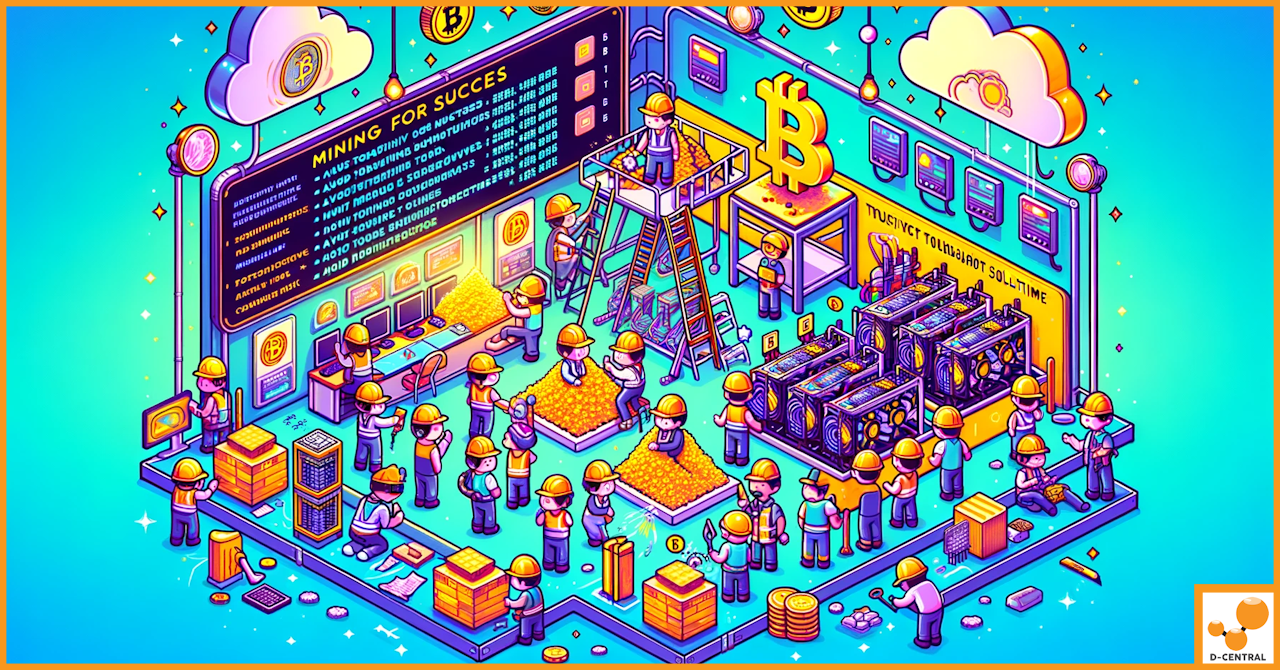
Bitcoin Miner Refurbishment: Breathing New Life into Your Old Miners
In the dynamic world of cryptocurrency, Bitcoin mining stands as a cornerstone activity, underpinning the decentralized ethos of digital currency.
4479 Desserte Nord Autoroute 440, Laval, QC H7P 6E2

Bitcoin mining, the process of validating transactions and securing the Bitcoin network, is a fundamental aspect of the cryptocurrency’s infrastructure. Miners use specialized hardware to solve complex mathematical problems, thereby confirming transactions and adding them to the blockchain ledger. This process not only maintains the integrity and trustworthiness of the Bitcoin network but also introduces new bitcoins into circulation as a reward for the miners’ efforts. As the first decentralized digital currency, Bitcoin relies on this mining process to remain decentralized and free from central authority control, ensuring that no single entity can dictate the network’s rules or alter its transaction history.
While traditionally seen as an endeavor for large-scale operations with massive computational power, Bitcoin mining is also accessible on a smaller scale in individual homes. Home Bitcoin mining offers a dual-purpose benefit: it supports the global blockchain network while allowing miners to repurpose the significant heat generated by mining hardware as a cost-effective heating solution for their living spaces. This approach not only provides economic benefits, such as reducing household heating costs during cold seasons but also enhances the energy efficiency of mining operations by utilizing what would otherwise be waste heat. This model of home mining contributes to the broader goals of sustainability and efficiency, aligning personal incentives with ecological awareness and network health.
One of the key hurdles for individuals interested in home Bitcoin mining is finding the right equipment that fits within the electrical constraints of typical residential setups, particularly in North America where the standard voltage is 120V. Most high-performance Bitcoin mining rigs, like the popular Antminer series, are optimized for 220V operations, which are more common in industrial settings than in residential areas. This voltage mismatch poses a significant barrier, as running these powerful machines on a typical home electrical system can be inefficient and potentially unsafe without proper modifications.
D-Central Technologies addresses this challenge head-on with innovative solutions tailored for the home miner. Recognizing the gap in the market, D-Central has developed specialized versions of popular miners, such as the Antminer Slim Edition. This model is specifically optimized for 120V usage, making it ideal for North American homes. This adaptation allows individuals to engage in mining without the need for extensive electrical upgrades or the risk of overloading their home systems.
By offering such customized solutions, D-Central not only facilitates easier access to Bitcoin mining technology for the average consumer but also enhances safety and efficiency. Their tailored products ensure that miners do not have to compromise on performance or safety, providing a seamless and effective bridge between the power of industrial-grade miners and the practicality needed for home use.
Bitcoin miners are notorious not only for their electricity consumption but also for the substantial amount of heat they generate as a byproduct. This heat, often seen as a challenge in maintaining the hardware, can actually be repurposed in innovative and beneficial ways, particularly in home environments.
Mining rigs like the high-performance ASICs used in Bitcoin mining can generate enough heat to significantly raise the temperature of their surroundings. This characteristic can be harnessed into a dual-purpose mining strategy where the heat generated by the miners is used to warm living spaces, thereby offsetting heating costs. This approach is not only economically beneficial but also enhances the energy efficiency of the mining operation.
Practical applications of this concept include:
By effectively re-utilizing the heat, home miners not only make their operations more sustainable but also contribute to a more decentralized Bitcoin network. This practice aligns well with the ethos of efficiency and self-sufficiency that many in the cryptocurrency community advocate.
The decentralization of the Bitcoin network is a core principle that ensures its security, stability, and resistance to censorship. Decentralization means that the control and decision-making are spread across many different participants rather than being concentrated in the hands of a few, preventing any single entity from having too much influence or control over the entire network.
Home miners play a crucial role in enhancing this decentralization. By participating in Bitcoin mining from diverse geographical locations and under different economic conditions, home miners add to the heterogeneity of the mining pool. This diversity helps protect the network against coordinated attacks or regulatory pressures that might be more effectively applied to centralized mining operations.
Additionally, the involvement of individual miners contributes to the robustness of the network by:
Home mining, therefore, not only serves the miners’ interest in generating Bitcoin but also plays a pivotal role in maintaining the health and democratic nature of the network. It underscores the philosophy that Bitcoin is designed to be a decentralized digital currency, free from the control of any central authority.
Home Bitcoin mining offers unique advantages in terms of energy efficiency compared to large-scale mining operations. Individual miners can leverage the waste heat generated by their mining equipment for practical purposes, like heating their homes, thereby turning what is typically an energy expenditure into a dual-purpose solution that can lead to cost savings and increased sustainability.
These practical applications demonstrate not only the economic benefits but also the enhanced energy efficiency of home mining setups compared to larger, industrial-scale operations. Large farms require extensive cooling systems that consume a lot of energy, whereas home miners can creatively re-purpose the heat output for domestic use, enhancing overall efficiency and profitability.
Mining Bitcoin at home provides not only a financial incentive but also enhances privacy and control over mining operations. This section explores how enthusiasts can set up personal mining pools or engage in solo mining directly from their home node.
Mining at home, whether solo or through a personal mining pool, offers significant advantages in terms of operational control and privacy, contributing positively to the decentralization of the Bitcoin network. These setups allow miners to fully participate in the network, enhancing the overall resilience and health of the Bitcoin ecosystem.
Efficient management of space, temperature, and noise is crucial for optimizing home Bitcoin mining operations. This section offers strategies for tackling these challenges and introduces D-Central’s innovative solutions tailored for residential environments.
By effectively managing the physical setup, temperature, and noise, home miners can create a more sustainable and less intrusive mining environment. D-Central’s specialized products and modifications play a pivotal role in making Bitcoin mining a viable option for enthusiasts in residential settings, contributing positively to the broader goal of network decentralization.
Ensuring the safety and efficiency of electrical setups is critical for home Bitcoin mining operations. This section provides best practices for creating a safe electrical environment for mining and highlights the importance of proper infrastructure.
By adhering to these guidelines, miners can significantly mitigate the risks associated with electrical setups in home environments. Safety should always be a priority, and taking these precautions helps protect both the miner and the mining equipment. This not only ensures a longer lifespan for the mining hardware but also contributes to a safer home environment.
Throughout this discussion, we’ve explored the substantial benefits and practical considerations of home Bitcoin mining. Not only does this endeavor support personal financial growth through generating non-KYC Bitcoin, but it also enhances the resilience and decentralization of the Bitcoin network as a whole. By engaging in home mining, individuals contribute to a broader distribution of the network’s hash power, which is crucial for its security and stability.
Home mining isn’t just about financial gains; it also offers a creative way to utilize excess heat, thus improving energy efficiency within your home environment. This dual-purpose approach exemplifies how Bitcoin mining can integrate seamlessly into daily life, turning a necessary expense into a beneficial resource.
We encourage anyone interested in the world of Bitcoin mining to consider the potential of setting up a home operation. Whether you’re looking to reduce noise, manage heat, or ensure safe electrical setups, D-Central Technologies provides customized solutions to meet your mining needs. Explore our innovative products like the Antminer Slim Edition and the Bitcoin Space Heater, which are specifically designed for home environments.
For more information and to view our range of products and services, visit us at D-Central Technologies. Here you can also find resources to help you set up and optimize your home mining operation. Start your mining journey today and take a step towards financial independence and contribution to the Bitcoin ecosystem.
What is Bitcoin mining?
Bitcoin mining is the process of validating transactions and securing the Bitcoin network through solving complex mathematical problems. Miners use specialized hardware to confirm transactions and are rewarded with new bitcoins and transaction fees.
Can Bitcoin mining be done at home?
Yes, Bitcoin mining can be done at home. It offers benefits such as supporting the blockchain network and using the heat generated by mining hardware as a cost-effective solution for home heating, especially in colder climates.
What are the challenges of home Bitcoin mining?
The major challenges of home Bitcoin mining include finding suitable equipment that fits residential electrical systems, managing the considerable heat output, and the initial setup costs of mining hardware.
How does D-Central Technologies support home miners?
D-Central Technologies supports home miners by offering specialized mining equipment optimized for 120V operations, such as the Antminer Slim Edition. This makes mining accessible without needing extensive electrical upgrades at home.
What are the advantages of using the heat generated by Bitcoin miners?
The heat generated by Bitcoin miners can be repurposed to warm living spaces, reduce heating costs, and enhance the energy efficiency of the mining operation, turning a potential challenge into a dual-purpose solution.
How does home mining contribute to the Bitcoin network?
Home mining enhances the decentralization and security of the Bitcoin network. It diversifies the geographical and economic distribution of miners, contributing to the network’s resilience against attacks and centralized control.
What is the benefit of solo mining from home?
Solo mining from home allows miners to have full control over their mining operations, including choosing which transactions to include in blocks. It enhances privacy and keeps rewards directly under the miner’s control, avoiding third-party pool fees.
How can I efficiently manage space, temperature, and noise for home mining?
Efficient management involves optimal layout for airflow, using noise-reducing modifications and cooling systems to manage heat. Companies like D-Central Technologies offer solutions like noise-dampening enclosures for residential mining setups.
What electrical considerations are necessary for safe home Bitcoin mining?
It’s essential to ensure the electrical system can handle the load, using dedicated circuits for mining operations. Installation and inspections by certified electricians, along with regular maintenance, can mitigate safety risks.
Where can I find products and information for starting a home Bitcoin mining operation?
D-Central Technologies offers a range of products like the Antminer Slim Edition and Bitcoin Space Heaters, designed for home environments, along with resources to help set up and optimize mining operations for those interested in home mining.
DISCLAIMER: D-Central Technologies and its associated content, including this blog, do not serve as financial advisors or official investment advisors. The insights and opinions shared here or by any guests featured in our content are provided purely for informational and educational purposes. Such communications should not be interpreted as financial, investment, legal, tax, or any form of specific advice. We are committed to advancing the knowledge and understanding of Bitcoin and its potential impact on society. However, we urge our community to proceed with caution and informed judgment in all related endeavors.
Related Posts

In the dynamic world of cryptocurrency, Bitcoin mining stands as a cornerstone activity, underpinning the decentralized ethos of digital currency.

Bitcoin mining stands as a cornerstone of the cryptocurrency world, a process that not only introduces new bitcoins into circulation

In the rapidly evolving world of digital technology, D-Central Technologies stands at the forefront as a leading Bitcoin mining service